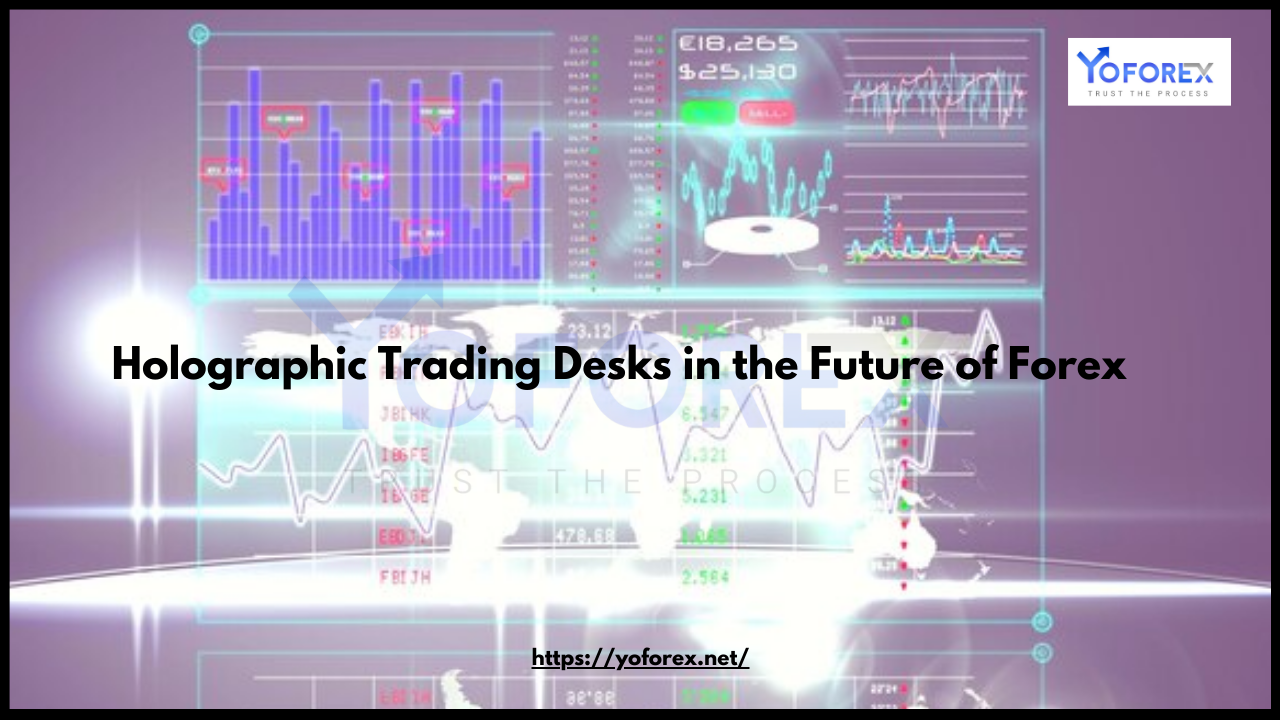The financial landscape is evolving rapidly, driven by advancements in technology. One of the most exciting innovations on the horizon is holographic trading desks, poised to revolutionize the forex trading industry. These futuristic workstations, equipped with augmented reality (AR) and artificial intelligence (AI), promise to transform how traders interact with data, execute trades, and make informed decisions.
As forex trading becomes increasingly complex and data-driven, the need for an intuitive and immersive interface grows. Holographic trading desks offer a seamless blend of technology and efficiency, enhancing decision-making and improving trade execution. In this blog post, we will explore how holographic trading desks are set to redefine the future of forex trading.
What Are Holographic Trading Desks?
A holographic trading desk is a next-generation trading interface that projects 3D holographic displays of market data, charts, and analysis tools. Unlike traditional monitors, these holograms float in midair, allowing traders to interact with them using gestures, voice commands, or even eye-tracking technology.
These setups integrate real-time market feeds, algorithmic trading software, and AI-driven predictive analytics, providing traders with an unparalleled depth of market understanding. Using augmented reality (AR) glasses or mixed reality (MR) headsets, traders can engage with dynamic 3D models of financial markets and execute trades with just a wave of the hand.
How Holographic Trading Desks Will Transform Forex Trading
1. Immersive Data Visualization
Traditional forex trading platforms rely on multiple screens displaying price charts, indicators, and order books. With holographic trading desks, this data can be displayed in three dimensions, making it easier to spot trends, correlations, and anomalies in the forex market. Imagine being able to walk through a virtual landscape of market movements, where currency pairs are represented as interactive 3D graphs that respond to real-time updates.
2. Enhanced Multitasking and Efficiency
Forex traders often need to monitor multiple assets, timeframes, and economic indicators simultaneously. Holographic trading desks allow traders to customize their workspace, arranging charts, news feeds, and order books in a way that maximizes efficiency. Instead of being constrained by physical monitors, traders can create custom virtual workspaces, instantly switching between different trading setups with a simple gesture or voice command.
3. AI-Driven Predictive Analytics
Holographic trading desks will seamlessly integrate AI-powered analytics to provide real-time insights. Advanced machine learning algorithms can analyze massive amounts of historical and real-time data to predict potential price movements and suggest optimal trading strategies. These AI assistants can also provide automated risk management, warning traders of potential losses and suggesting alternative strategies.
4. Gesture and Voice-Controlled Trading
In a holographic trading environment, traders will no longer be limited to keyboards and mice. Instead, they can use gesture-based controls to manipulate charts, place trades, and analyze trends. Voice commands will also play a crucial role, allowing traders to execute trades, set alerts, or request market summaries without taking their hands off the desk.
5. Seamless Remote Trading
One of the major benefits of holographic trading desks is their potential to facilitate remote trading like never before. With cloud-based holographic interfaces, traders can access their personalized forex trading workspace from anywhere in the world, eliminating the need for physical trading stations. This is particularly beneficial for institutional traders who need to stay connected to global markets 24/7.
6. Risk Management and Scenario Simulation
Holographic trading desks can simulate different market scenarios in real time, allowing traders to test strategies in a risk-free virtual environment. By projecting future price movements and potential outcomes based on historical data, traders can make better-informed decisions and mitigate risks before executing real trades.
7. Augmented Social Trading and Collaboration
With holographic technology, forex trading can become more collaborative and interactive. Traders will be able to enter virtual trading rooms where they can share market insights, discuss strategies, and collaborate on trades in real-time. Institutional trading firms can use holographic meeting rooms to conduct virtual training sessions, analyze global markets, and make collective trading decisions.

Challenges and Limitations
While holographic trading desks have the potential to revolutionize forex trading, several challenges need to be addressed:
- High Costs: Implementing holographic trading systems will require significant investment in hardware and software, making them initially accessible only to large institutions.
- Technical Limitations: AR and holographic technology are still evolving, and current headsets may not yet offer the level of clarity and precision needed for seamless forex trading.
- Learning Curve: Traders accustomed to traditional trading setups may need time to adapt to the new interface and controls.
- Security Concerns: Storing and processing sensitive trading data in the cloud raises cybersecurity risks, requiring robust encryption and security protocols.
When Can We Expect Holographic Trading Desks?
The development of holographic trading technology is still in its early stages, but major financial institutions and tech companies are already exploring its potential. With companies like Microsoft (HoloLens), Apple (Vision Pro), and Meta (Quest Pro) leading advancements in AR/MR, we could see the first professional-grade holographic trading desks emerge within the next 5-10 years.
As the costs of AR/MR technology decrease and AI-driven analytics become more sophisticated, holographic trading desks will eventually become a standard feature in high-frequency trading firms, hedge funds, and institutional forex trading floors.
Conclusion
The future of forex trading is poised for a revolutionary shift, with holographic trading desks offering an immersive, interactive, and AI-powered trading experience. By integrating 3D data visualization, gesture-based controls, AI analytics, and virtual collaboration, these futuristic trading setups will help traders make better, faster, and more informed decisions.

